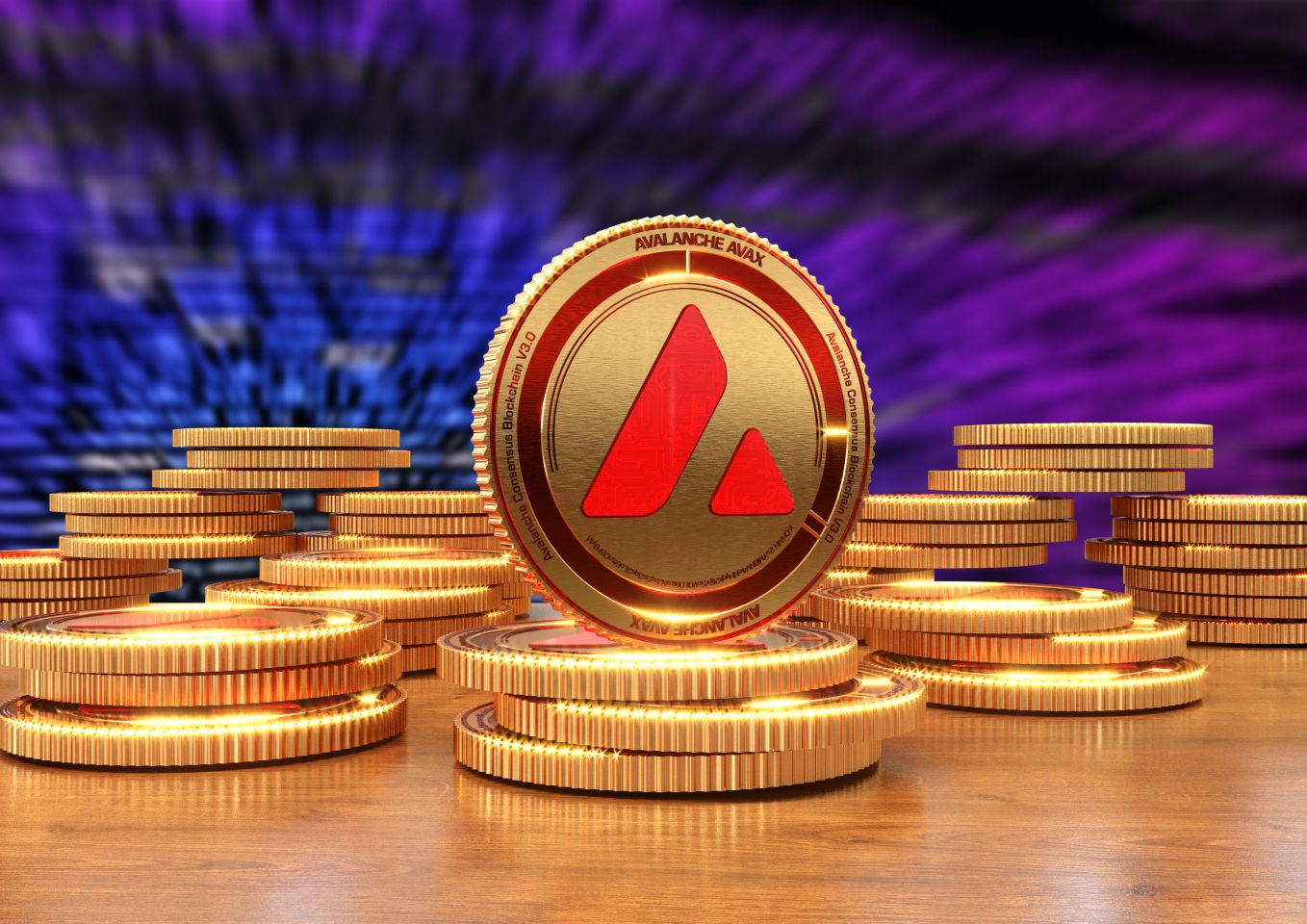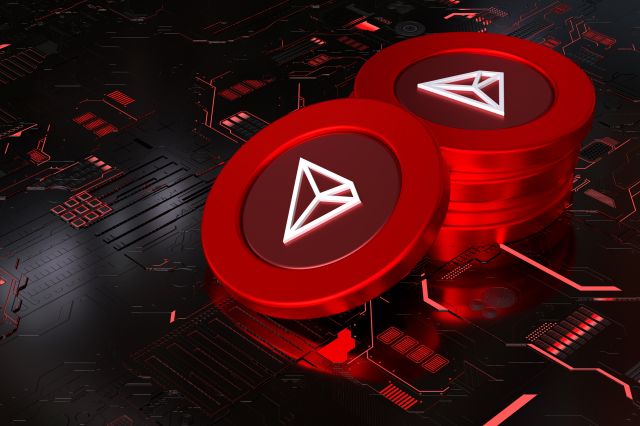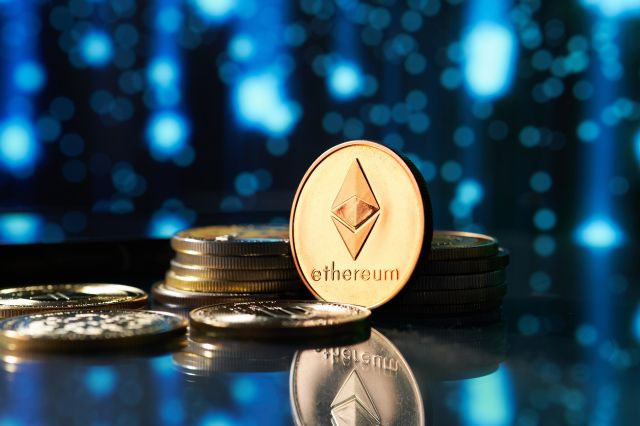What is Avalanche? A trader's guide

Learn about Avalanche and the AVAX price history, how the network and the cryptocurrency work, and how to trade AVAX/USD with CFDs.
What is Avalanche?
Avalanche (AVAX) is an open-source, decentralised Layer 1 blockchain network developed by Ava Labs, a blockchain technology firm co-founded by Emin Gün Sirer, a Cornell University professor, alongside Cornell PhDs Kevin Sekniqi and Maofan Yin, and launched in 2020. It aims to provide a highly scalable, secure, and energy-efficient platform for decentralised applications (dApps) and enterprise solutions.
Unlike most traditional blockchains, Avalanche utilises a unique multi-chain architecture, which employs three primary chains, each with distinct functions. This enhances the network's performance by delegating distinct tasks to each chain, enabling faster transactions and reduced congestion.
Avalanche’s native cryptocurrency, AVAX, serves as its primary medium for paying transaction fees, staking for network security, and participating in governance. As of January 2025, AVAX ranks among the top 15 cryptocurrencies by market capitalisation on CoinMarketCap.
Avalanche vs Polkadot vs Solana: what are the differences?
Avalanche is often compared to other prominent Layer 1 blockchains like Polkadot and Solana – and while each shares similarities, they also have differences. Here’s how they compare:
|
Avalanche |
Polkadot |
Solana |
|
|
Cryptocurrency |
|||
|
Origin |
Launched in 2020 by Ava Labs, co-founded by Emin Gün Sirer. |
Introduced in 2020 by Dr. Gavin Wood, a co-founder of Ethereum. |
Launched in 2020 by Anatoly Yakovenko and Solana Labs. |
|
Consensus mechanism |
Avalanche consensus protocol, with Snowman optimised for high throughput and low latency. |
Nominated proof-of-stake (NPoS) for validator selection, with sharded parachains. |
Proof-of-stake (PoS) for validation, with proof-of-history (PoH) as a cryptographic clock for sequencing. |
|
Intent |
Scalable dApps and customisable subnets. |
Interoperable multi-chain ecosystem with shared security. |
High-speed blockchain for decentralised apps and micro-transactions. |
|
Transaction speed |
Handles up to 4,500 transactions per second (TPS) under optimal conditions, with <2-second finality. |
Designed for interoperability, achieves ~1,000 TPS with 6-second finality. |
Theoretically capable of processing up to 65,000 TPS with sub-second finality under optimal conditions. |
|
Architecture |
Tri-blockchain design (X-chain, C-chain, P-chain). |
Central relay chain with interconnected parachains. |
Single-layer structure for minimal latency. |
|
Total supply cap |
Capped at 720 million AVAX. |
No fixed cap; inflationary with an annual target of 10%. |
No fixed cap; inflationary with dynamic issuance. |
|
Inflation/deflation |
Burn mechanism reduces supply; staking rewards come from existing token allocations. |
Inflation funds staking rewards; parachain auctions involve locked DOT for crowdloans. |
Inflation provides staking rewards: fees partially burned. |
|
Interoperability |
Focused on customisable subnets within the Avalanche ecosystem. |
Built for cross-chain communication via parachains. |
Interoperability enabled via bridges like Wormhole. |
|
Smart contracts |
Fully EVM-compatible, easing migration for Ethereum developers. |
Parachains support various smart contract frameworks; some, like Moonbeam, are fully EVM-compatible. |
Native smart contract support with Rust and C. |
|
Use cases |
dApps, DeFi, and enterprise-grade solutions. |
dApps, cross-chain solutions, and governance mechanisms. |
dApps, NFT platforms, and low-latency gaming applications. |
|
Transaction fees |
Dynamic and relatively low fees. |
Varies based on parachain usage and Relay Chain congestion. |
Extremely low fees, ideal for micro-transactions. |
Check out our comprehensive trader’s guide to Solana and our guide on Polkadot.
Avalanche operates as a highly scalable, energy-efficient blockchain network designed to address the limitations of traditional systems. Its unique tri-blockchain architecture and consensus mechanism set it apart as a leading contender in the Layer 1 blockchain space.
Its design is built around three distinct chains – X-Chain, C-Chain and P-Chain – each dedicated to a specific function. By delegating specialised tasks to each chain, Avalanche significantly enhances throughput, optimises performance, and ensures scalability – which allows for high efficiency and minimal congestion. Here’s how its chains work:
-
X-Chain (Exchange Chain) – Manages the creation and exchange of digital assets. Transactions on this chain are fast and secure, benefiting from Avalanche’s native consensus protocol.
-
C-Chain (Contract Chain) – Facilitates the execution of smart contracts and is fully compatible with Ethereum’s EVM (Ethereum Virtual Machine), which makes it easier for developers to migrate or build decentralised applications (dApps) on Avalanche.
-
P-Chain (Platform Chain) – Handles network validators and the creation of custom subnets, allowing enterprises and developers to launch their own blockchains within the Avalanche ecosystem.
Avalanche uses two consensus mechanisms: ‘Avalanche’ for the broader network and ‘Snowman’ specifically for the C-Chain, designed to ensure high throughput and near-instant finality. They rely on repeated sampling and probabilistic agreement to validate transactions, enabling the network to achieve thousands of transactions per second (TPS) without compromising security or decentralisation.
Its native cryptocurrency, AVAX, is used to pay transaction fees, stake for network security, and participate in governance decisions. AVAX’s total supply is capped at 720 million tokens and released gradually through staking rewards and other mechanisms to maintain economic stability and long-term value.
Learn more about altcoins and how they work – read our comprehensive trader’s guide to altcoins.
What’s the AVAX price history?
AVAX’s price history began following its September 2020 mainnet launch, after Avalanche raised $42 million in under 24 hours during its July 2020 Initial Coin Offering (ICO). This successful fundraising event generated significant interest and positioned AVAX as a promising contender in the Layer 1 blockchain space. Following its official launch in September 2020, AVAX was initially priced around $4.00 and saw moderate activity as the project gained traction.
Its first major price surge occurred in early 2021, influenced by the January launch of Avalanche-Ethereum Bridge (AEB). This bridge enables seamless asset transfers between the two blockchains, attracting DeFi projects and liquidity to Avalanche. The growing ecosystem drove AVAX to $55.00 by mid-February. However, as early adopters took profits and the broader market corrected, AVAX’s price fell back below $15.00 by June 2021.
Momentum picked up again in mid-2021 with the announcement of Avalanche Rush, a $180 million liquidity mining program. This initiative brought high-profile DeFi platforms like Aave (AAVE) and Curve Finance (CRV) to Avalanche, significantly increasing the ‘total value locked’ within its ecosystem. Alongside the proliferation of custom subnets and dApps, AVAX reached an all-time high of $146.22 on 21 November 2021.
A bear market
The broader cryptocurrency market downturn in 2022, compounded by macroeconomic factors like rising interest rates, declining DeFi activity, and events such as the Terra ecosystem collapse, saw AVAX’s price plummet below $20.00 by mid-year. Increased competition from other Layer 1 blockchains, including Solana and Ethereum’s transition to proof-of-stake, also contributed to downward pressure.
In early 2023, the release of the Avalanche Warp Messaging protocol (AWM), which facilitates seamless interoperability across subnets, helped reignite interest in the network. By mid-2023, partnerships with major enterprises like Amazon Web Services (AWS) and Alibaba Cloud underscored Avalanche’s potential for enterprise adoption.
Avalanche also introduced Cortina in 2023, a network upgrade designed to streamline subnet creation and improve network efficiency. This was followed by the debut of Elastic Subnets later in the year, a feature allowing developers to scale subnets dynamically based on demand, drawing new projects to the ecosystem.
These advancements coincided with a recovery in the broader crypto market, helping AVAX’s price grow consistently throughout the second half of the year, rising above $50 by December 2024, and trading above $30 into the beginning of January 2025.
Which factors might influence the AVAX live price?
AVAX’s price could be affected by a variety of influences specific to the network, broader market trends, and macroeconomic developments.
Here are some of the key factors which might move the AVAX price:
Burn mechanism and deflationary design
Avalanche has a deflationary process where transaction fees are burned, permanently reducing the supply of AVAX. This mechanism creates scarcity, which may influence price increases, particularly during periods of high network activity. Conversely, reduced transaction volumes could limit the burning rate, potentially leading to price decreases. Token release schedules and market activity also play a significant role.
Adoption and enterprise partnerships
Adoption through partnerships and enterprise use cases may have an impact on AVAX’s price. Collaborations with major companies such as Amazon Web Services (AWS) and Alibaba Cloud increased the network’s credibility and drew new users to the ecosystem. Growing adoption of Avalanche subnets and enterprise solutions could bolster AVAX demand, potentially contributing to price increases. Conversely, failure to secure or expand such partnerships may hamper its growth potential.
Technological advancements and upgrades
Avalanche’s features, such as the recent introduction of Elastic Subnets and the Avalanche Warp Messaging (AWM) protocol, could enhance its appeal to developers and businesses. These upgrades can signal growth and technological leadership, potentially boosting AVAX’s price. But, the success of these features depends on their adoption by developers and users, as well as their ability to outpace competitor offerings. Delays or issues in deploying new features could negatively affect market sentiment, possibly contributing to price decreases.
Regulatory environment
As with all cryptocurrencies, AVAX’s price is sensitive to regulatory developments. Favourable regulatory updates or clarity surrounding digital assets, such as approvals of blockchain-friendly legislation or institutional investment rules, can support price growth. However, stricter regulations or negative headlines, such as bans on decentralised platforms or heightened scrutiny on blockchain networks, could dampen demand for AVAX.
Broader cryptocurrency market trends
AVAX’s price often moves in tandem with broader cryptocurrency market trends. During bullish market cycles, increased interest in blockchain technology and digital assets can lead to rising prices for AVAX. Conversely, bearish market conditions, driven by factors like rising interest rates or decreased risk appetite, may weigh on its value. Avalanche’s ability to maintain competitive advantages during these cycles—such as its scalability and developer ecosystem—can influence its resilience compared to other Layer 1 blockchains.
Discover more about the AVAX live price, including price forecasts and predictions from market analysts – read our guide about Avalanche (AVAX) price predictions.
What are the AVAX trading hours?
AVAX operates on a decentralised blockchain network that is active 24 hours a day, seven days a week. This means you can trade AVAX at any time, including weekends and holidays.
-
Cryptocurrency exchanges – many exchanges facilitate 24/7 trading, allowing for continuous market participation.
-
Online trading platforms – some reliable and trusted brokerages provide AVAX trading via CFDs.
If you choose to trade CFDs, you can follow the AVAX performance live in US dollars with our comprehensive AVAX/USD price chart.
Monitoring the cryptocurrency’s activity can help you to keep an eye out for any key fundamental or technical events that may affect short-term movements in its value.
How to trade AVAX
AVAX is a cryptocurrency, meaning that it can be traded directly on a cryptocurrency exchange or through peer-to-peer transactions. Traders may also choose to trade AVAX via a derivative, a financial product that takes (or ‘derives’) its value from the price of the underlying asset.
You could use a contract for difference, or CFD, to trade on the price of AVAX pairs. A CFD is a contract, typically between a broker and a trader, where one party agrees to pay the other the difference in the value of a security, between the opening and closing of the trade.
You can use CFDs to trade on whether you think an AVAX pair will rise (called ‘going long’) or fall (‘going short’). CFDs give you access to leverage, allowing larger positions with a relatively small outlay. This amplifies your potential profits, but also your potential losses, making CFD trading risky.
You can learn more about trading cryptocurrencies with Capital.com in our comprehensive guide to cryptocurrency trading.
Aside from CFDs, you can also trade AVAX pairs through instruments like futures, options, ETFs, and mutual funds. Each offers an alternative to the leveraged trading of CFDs, suiting different risk profiles and strategies.
FAQs
What is Avalanche crypto used for?
Avalanche (AVAX) is a cryptocurrency used on the Avalanche blockchain network. Its primary uses include paying transaction fees, staking to secure the network, and participating in governance decisions. AVAX also supports the network’s ecosystem of decentralised applications (dApps) and customisable subnets, enabling projects like DeFi platforms, NFT marketplaces, and enterprise-grade solutions. Notable examples include Pangolin (a decentralised exchange) and Trader Joe (a DeFi platform).
How much AVAX is in circulation?
As of January 2025, there are approximately 350 million AVAX tokens in circulation, though this figure evolves due to staking rewards, burns from transaction fees, and other factors. The capped total supply is 720 million. AVAX employs a deflationary mechanism where transaction fees are burned, permanently reducing the token supply over time. This aims to create scarcity, but its long-term impact on price depends on network activity and demand.
How can I buy or trade AVAX?
You can buy or trade AVAX directly on major cryptocurrency exchanges. To purchase AVAX, you’ll need to set up an account, complete any required identity verification, and deposit funds via fiat currency or other cryptocurrencies. Once funded, you can exchange your assets for AVAX.
For those interested in trading derivatives, AVAX can also be traded through Contracts for Difference (CFDs) on platforms like Capital.com. CFDs allow you to speculate on AVAX price movements without owning the underlying asset, offering flexibility to go long or short depending on market conditions. However, CFDs involve leverage, which can amplify both profits and losses.
What makes Avalanche different from other blockchains?
Avalanche stands out due to its tri-blockchain architecture and the combination of its Avalanche and Snowman consensus mechanisms, which ensure high scalability, low transaction fees, and near-instant finality. The Avalanche consensus uses a directed acyclic graph (DAG) structure for broader network operations, while Snowman is optimised for linear chains like the C-Chain.
Unlike many other blockchains, Avalanche enables the creation of custom subnets, allowing businesses and developers to tailor blockchain solutions to specific needs while maintaining interoperability with the broader network. These subnets have been used for applications ranging from regulated finance ecosystems to gaming platforms, providing unique flexibility not commonly found in other blockchain systems.
Visit our other complete guides

How to trade Tron
